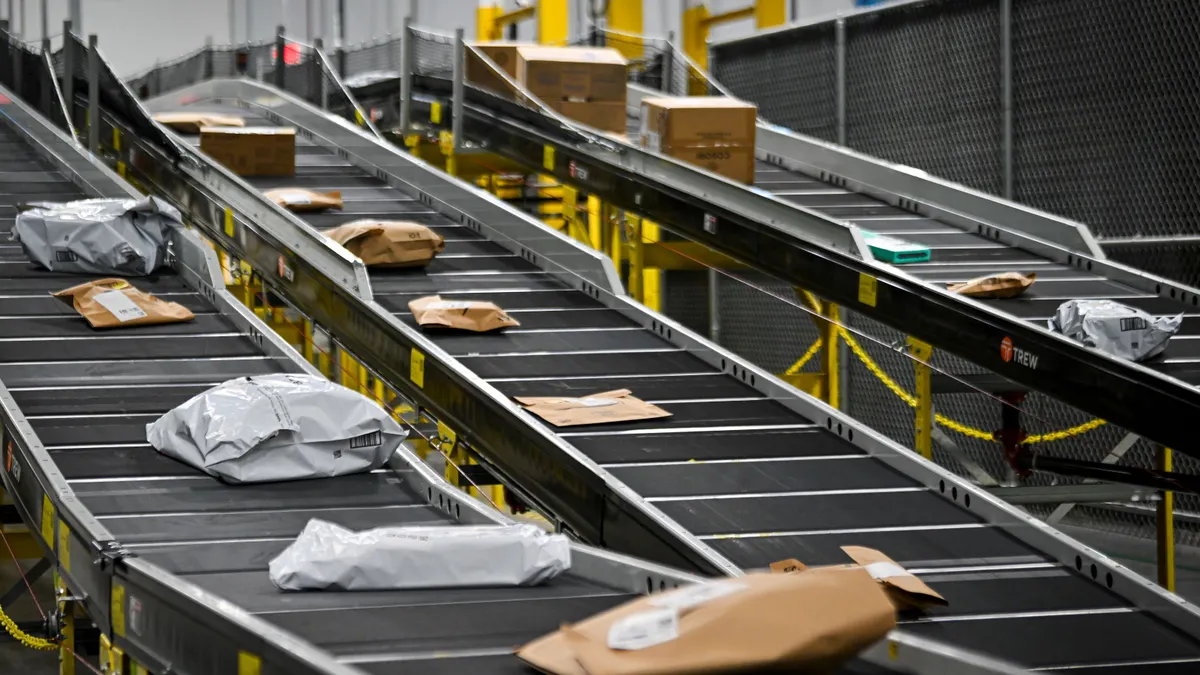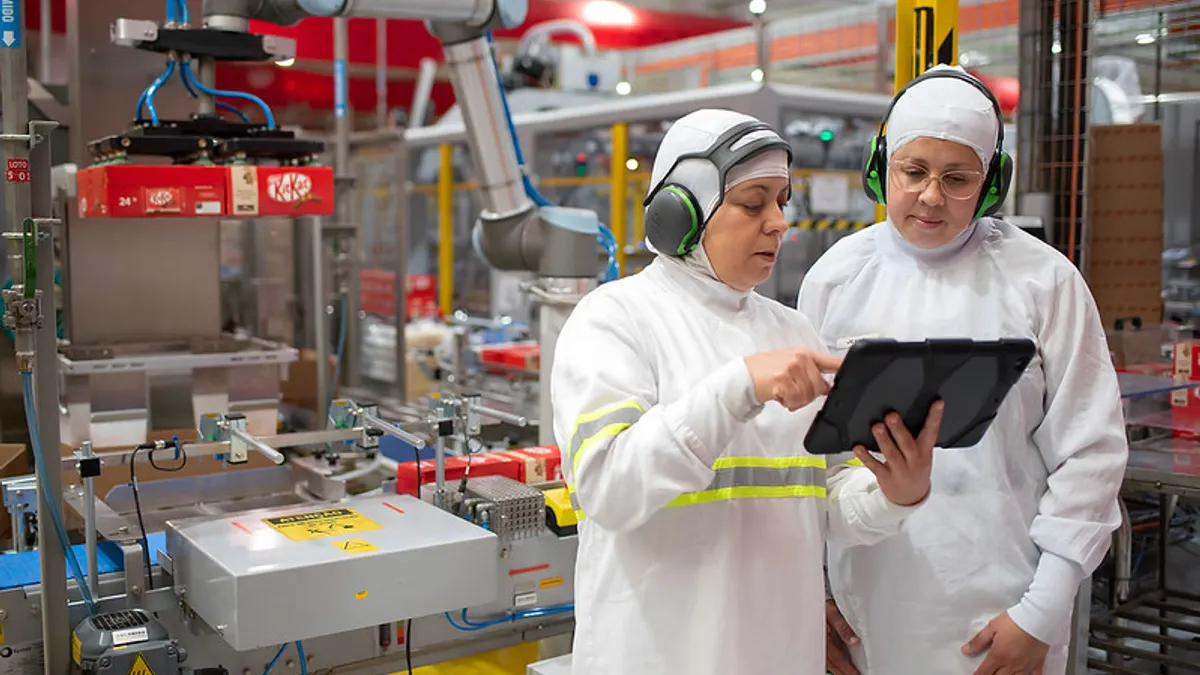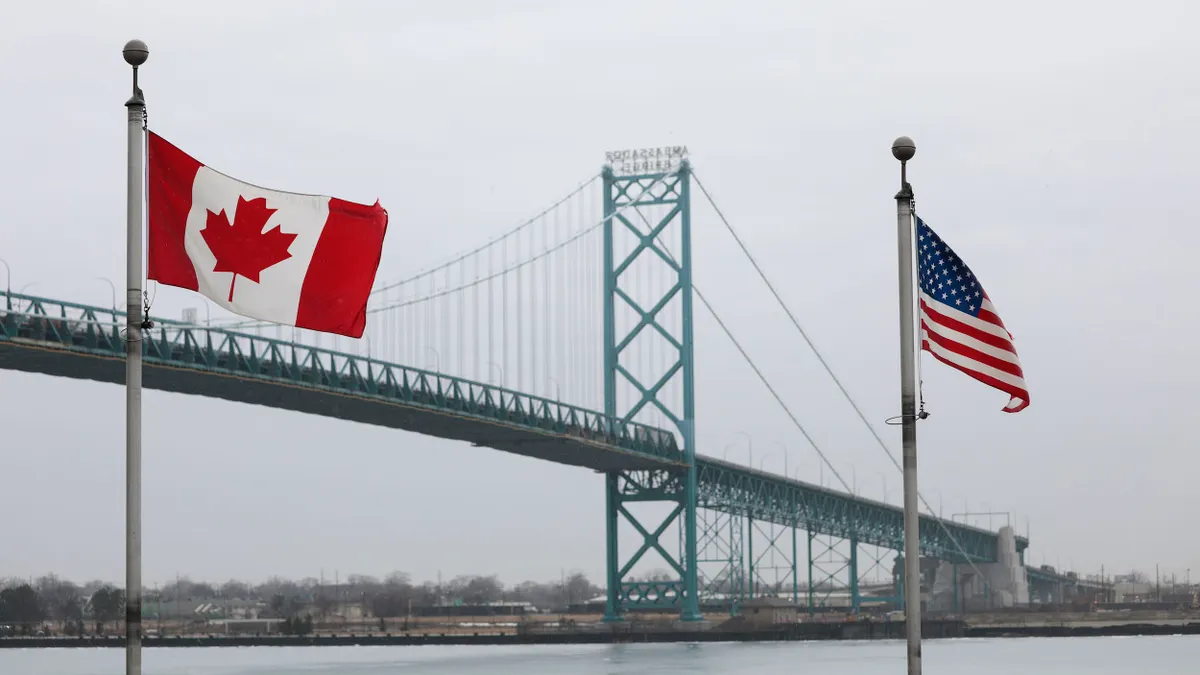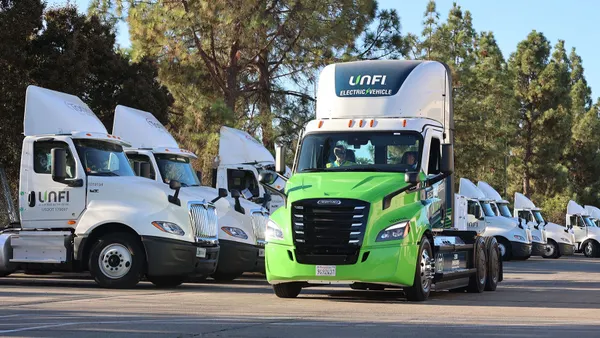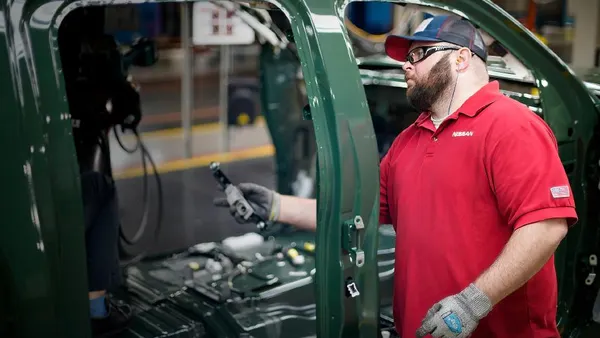Amazon is expanding its Multi-Channel Fulfillment service to support merchants' sales on Walmart, Shopify and Shein as part of several new features in its supply chain portfolio, according to Dharmesh Mehta, VP of worldwide selling partner services.
“Now, already we've just launched for orders from Walmart,” Mehta told Supply Chain Dive. “We're expanding our partnership with Shopify, and then coming later this year, we'll support Shein.”
Multi-Channel Fulfillment manages picking, packing and delivering operations across across sales channels such as Etsy, Temu and TikTok Shop, Mehta said in a Thursday blog post. In turn, sellers can have a single pool of inventory across all sales channels, allowing sellers to maintain less inventory sitting stagnant in warehouses.
"This expansion helps brands reach customers wherever they shop—while relying on Amazon’s fulfillment network to deliver for them," Mehta said in the blog post.
When using Multi-Channel Fulfillment and Fulfillment by Amazon together, there are, on average, 19% fewer out-of-stock rates and inventory turnover increases by 12%, Mehta said
Amazon also announced other upgrades in its pursuit of an end-to-end supply chain ecosystem for sellers.
Global Warehousing and Distribution
Mehta said Amazon is launching its Global Warehousing and Distribution service, which will allow sellers to hold products in bulk at a lower cost near the original manufacturing site. Users can send goods from the storage locations out to destination countries as needed, per the blog post.
The expansion builds on Amazon’s existing warehousing and distribution capabilities, which manage both warehousing and global logistics.
Amazon is planning a launch in “every major manufacturing location,” Mehta said. Although specific countries are still being finalized, the first of the facilities is expected to launch later this year, he told Supply Chain Dive.
“Some of the early places we've been looking at are in China and Vietnam or some of the international locations, but I think over time, you'll see us in Europe and Indonesia and India, and kind of all the places someone may manufacture and need global distribution,” he said.
During the early pilot phase, sellers moved products from the global warehousing and distribution service into Amazon’s fulfillment network seven days faster, according to Mehta. In turn, sellers were able to better keep products in stock and ready for same- or next-day delivery.
Amazon Global Logistics
The e-commerce giant continues to launch more direct routes connecting manufacturing hubs with “popular destination countries” for its sellers, Mehta wrote.
Currently, Amazon Global Logistics offers ocean cargo and air freight shipments from China and Hong Kong to the U.S., United Kingdom, France, Germany, Italy and Spain, according to the company’s website.
“These new shipping lanes enable faster speed and greater reliability, and by the end of 2026, we expect AGL will provide shipping services that cover 96% of the inbound volume sellers send to FBA,” Mehta said in the post. “That breadth of coverage means fewer handoffs, more predictable schedules, and a faster path to getting inventory positioned for same- and next-day Prime delivery.”
GenAI customs clearance
Amazon is tapping generative artificial intelligence to simplify and speed up customs clearance, per the blog post.
The technology will pre-populate required fields for sellers, such as product classification, and reuse information across documents. The service will also help flag potential mistakes to avoid errors and delays, Mehta wrote in the blog post. He added that early results show sellers have cut customs paperwork time by over 50%.
Because customs forms often ask for the same thing at several times in different ways, sellers can sometimes run into the issue of being inconsistent with the data, Mehta told Supply Chain Dive. He added that by using AI tools, the company can insert product information that the seller has already given Amazon.
“On a lot of the things that we generate, we don't just generate it and go run with it,” Mehta told Supply Chain Dive. “We generate and put it in front of the seller, and so they have an opportunity to still check it and verify, and they confirm, and they can tweak if they disagree or want to change something or find an inaccuracy.”
Correction: An earlier version of this story used three quotes from a draft version of Amazon's blog post. The quotes were updated to match the published version.



